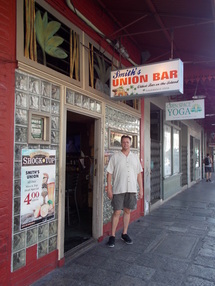
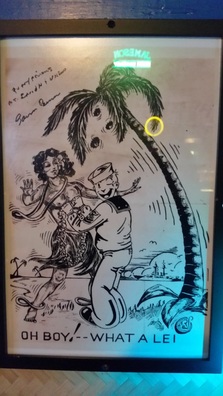
 One of the many perks of visiting every state in the country is that sooner or later, you are going to have to visit Hawaii. Chinatown, Honolulu, in the former red light district is where we found Smith’s Union Bar, aka Smitty’s. It was established in 1934 by a man named Joe Holley and served whiskey and entertainment to the sailors of Pearl Harbor. His son, Leroy Holley took the bar over and married the bartender Gail. Leroy was a well-connected lobbyist, who preferred to be known as “just some local guy who could get things done.” His role as the owner of Smith’s allowed him to get to know politicians, gangsters, sailors, and business tycoons. He lobbied for the working man, and Tony Rutledge, president of labor union-related nonprofit Unity House, said Holley was a friend of working people. "He was always ready to listen and help. He helped resolve a lot of problems behind the scenes. He was just a friendly guy”  Smith’s clearly hasn’t changed much over the years and the old navy pictures and cartoons that lined the narrow bar-room reminds one of the seedy sailor, feel of the bar. Our bartender, Darryl however, maintained the friendly warmth of Holley, the former owner, and kept the tunes playing and everyone’s feet tapping. While smiling and enjoying the classic rock tunes with cold, cheap beer, it was easy to make conversation with those around us. We loved how welcoming the atmosphere was in spite of a diversity of age, gender, and race amongst the regulars. Okay, so, full disclosure, the police were called before we left, but this time it wasn’t our fault (lol). Evidently not all customers were as impressed with such a diverse crowd, but one apple didn’t spoil the crate, so to speak, and with a little encouragement from the police, the bad apple moved on. By that time, our plan of stopping in for one beer had already become a four hour party, so instead of staying for karaoke, we said our good byes. We had walked about a block towards our hotel, when one of our new friends caught up with us to give us his contact information to stay in touch. We had made connections here that will leave the seedy old Navy bar a special place in our hearts!
10 Comments
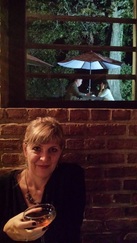 For Bruce and me, celebrating our fifth wedding anniversary by having a gourmet dinner with an impressively crafted cocktail in a 200 year old tavern was our idea of a wonderful time! Enhancing the romance of the evening was the mystery of the place. A Renovations in the 1930s had discovered 3 skeletons and a jeweled dagger behind a wall close to the fireplace! The story is that one set of bones belonged to Madeline, the original owner’s mistress. The reason for the other two skeletons and the dagger is not known, but what perfect material for a great ghost story, and anniversary dinner! 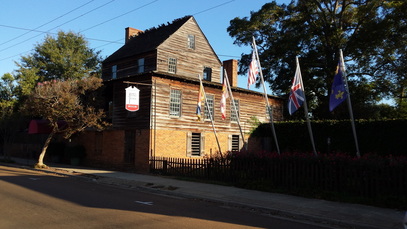 King’s Tavern was constructed in 1769 using beams from scrapped New Orleans sailing ships and barges that had come down the Mississippi River. Richard King purchased the home in 1789 and turned the home into a boarding house and Tavern. The rustic but elegant farm table interior with ancient wooden walls helped transport us back to the late 1700’s! Now owned and run by Regina Charboneau, a nationally known chef from San Francisco, the farm-to-table concept menu completed the bucolic experience. Watching the mixologist make our drinks at the bar was like watching a chemist putting on a performance, and the drinks, lived up to their exciting build up! 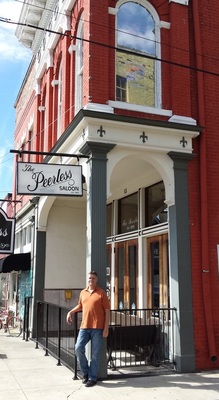 Finding the oldest bar in Alabama was a bit of a challenge. When I read the history of T.P. Crockmiers which is credited as the oldest bar, I saw that it was originally established in Atlanta, GA and then moved to Alabama. I felt that starting off in a different state disqualified Crockmiers so I researched further and discovered the Peerless Saloon. It was established in Alabama and was also the first bar built to serve alcohol in grand style, after a bitter dispute over the legalization of alcohol had ended in Anniston. The owner, Robert E. Garner was a philanthropist who bought Old Wildcat Whisky by the barrel and sold it at the Peerless in bottles from his own glass factory. The Saloon sat empty for a few years in the 1980’s, but after being registered in as a historic building on the National registry, it finally reopened in 1992, preserving the vintage ambiance remarkably well. 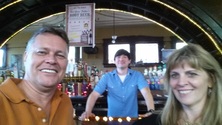 The massive mahogany bar dominates the atmosphere as soon as you walk through the door. This impressive mirror backed piece of history was purchased from the 1904 St. Louis World’s Fair and has adorned the Peerless since it was installed in 1906. Our bartender, Donny was more than enthusiastic to talk about the history of the bar including the rumors of the ghost of Lucinda who had thus far eluded him. Lucinda was the Madame of the upstairs brothel and was shot and killed by police in 1919. She still haunts her former brothel upstairs as she lounges bare bodied in the portrait above the bar in the beautiful room with four original fireplaces elegantly lining the walls. Before we ended our visit, Mickey, who had served us earlier at the Peerless grill next door joined us for a final toast. 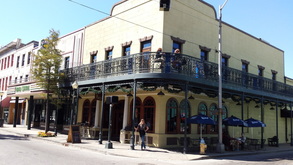 Since T.P. Crockmiers is given credit as the oldest bar, we couldn’t leave Alabama without at least checking it out. T.P. Crockmiers has moved several times since it was originally established and has now landed on Dauphin Street in Mobile. The street reminded me of New Orleans' French and Italian style buildings which are ornately adorned with wrought iron railings. We weren’t surprised to learn from our bartender that Mobile takes credit for the origination of Mardis Gras and even has its own Mardis Gras museum. One interesting note about Mobile, AL is that when it became evident that the prohibition law may pass, Mobile’s Mayor led a delegation to Montgomery to prevent the law and even the President of the Bank of Mobile wired legislators to let them know that if prohibition passes, Mobile was ready to secede from the state. The founder of Crockmiers was Thaddeus P. Crockmier, a professional gambler and son of a wealthy plantation owner who wanted to build the most unique restaurant in the south. He started the restaurant on Peachtree Street in Atlanta in 1875 before it eventually moved to Alabama. I enjoyed one of their specialties, the Conecuh burger, in which the ground beef is mixed with Conecuh sausage. T.P. Crockmiers had good food and a friendly atmosphere but the highlight was the delightful surprise of its charming location in the historic section of Mobile, Alabama. 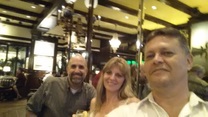 After dinner Bruce, Glenn, and I stayed to have a drink in the corner bar to make sure we completed the oldest bar experience. There are four separate bar areas in addition to the dining areas which were all ornately adorned and every area was full of people! It was easy to see how Old Ebbitt Grill for several years was the restaurant that boasted the highest sales in the country. We barely had room to enjoy our beer, but it was worth the squeeze to look around and enjoy all of the artifacts, antiques and artwork that made the atmosphere so unique. The Saloon began in 1856 as a boarding house owned started by William E Ebbitt, and moved locations, changed owners, and accumulated a priceless collection of fixtures and furnishings. The mounted Walrus head is said to have been shot by Teddy Roosevelt and the walls are covered with beautiful paintings, and everything you see looks beautiful, old, historic, and probably has a good story! Unfortunately the place was far too busy to talk to anyone there about the history but it was an incredible environment for the three of us to enjoy some beer together! 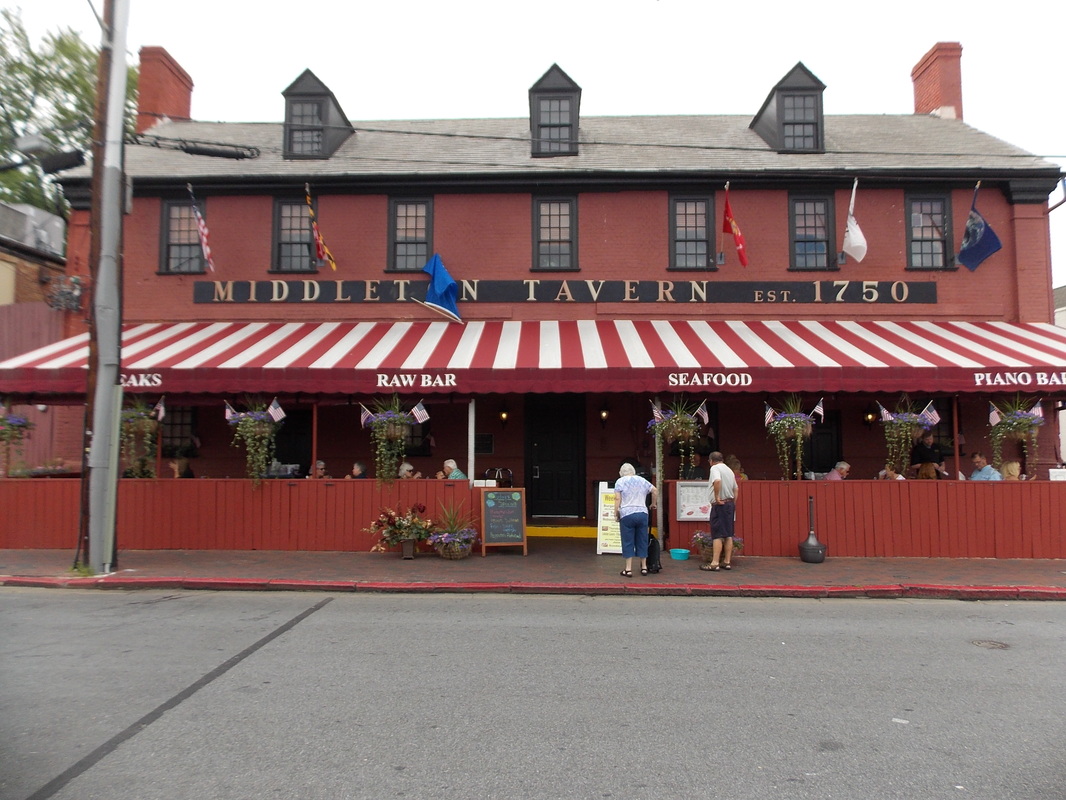 Maryland has some controversy over which bar claims the title of the oldest. Matt Meltzer’s Yahoo article on oldest bars credits Middleton Tavern as the oldest bar in Maryland, established in 1750, however just up the street we found a bar, Reynolds Tavern that claims they have 3 years on Middleton. If we discount Reynolds because they had converted over the years to a private residence and to a bank, than we may have to discount Middleton anyway because “The Horse You came in on Saloon” established in 1775 claims to be the oldest continuously operating bar in MD. “The horse” claims they are the only bar in Maryland that operated through prohibition. In any case, we visited both Middleton and Reynolds in Annapolis and love Maryland enough to come back someday to visit “The Horse you came in on” at Fell’s Point in Baltimore. 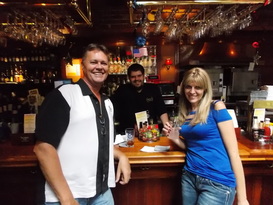 Middleton Tavern is located right on the end of a really cool historic area surrounding a water inlet in almost a park-like setting. The building itself is old, charming, and beautiful, but the highlight was probably the oysters Bruce enjoyed, including their famous Oyster shooters. This is a shot glass filled with an oyster and cocktail sauce to be slurped and chased with another shot glass of beer. Bruce found new love with that shot! Though the bar itself was open to a two story ceiling and was quite ornate and beautiful, it maintained its local warmth. Joining us at the bar were two regulars, one woman who makes Middleton a regular stop for lunch topped with an oyster shooter and another gentleman who happened to be from the chamber of commerce. To me, when we meet friendly locals at these bars it makes the experience more authentic and says a lot about the character of the bar. 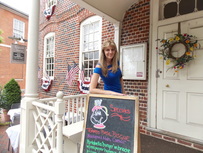 The next stop on this double bar tour in this historic section of Annapolis was Reynolds Tavern. Reynolds Tavern was converted into a bed and breakfast tea house, but the old original kitchen in the cellar was converted into a bar. When you walk in, it feels like walking into a museum with antiques decorating the elegant dining rooms. Though we had confirmed prior to arriving that they are a tavern, I wondered if we had made a mistake since this certainly did not feel like a tavern. When we asked if they still had a bar, they lead us down stairs to a pleasantly cool cellar. The old stone walls, large kitchen fireplace, and low beamed ceilings gave the place a pleasantly quaint atmosphere. They featured local artisan beers and surprisingly a full service bar in its seemingly hidden location. The owner even joined us to talk about the buildings history which included a complete conversion in the early 1900’s to Farmer’s Bank. 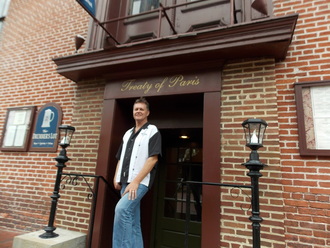 Walking through this historic neighborhood of centuries old buildings, it was easy to picture what it may have been like over 200 years ago. As we passed a sign showing were the Treaty of Paris of Paris was signed, it was daunting to think of the great men including George Washington, Thomas Jefferson, Benjamin Franklin, and James Monroe, who walked these streets and even frequented Middleton Tavern, the very same place where we had just eaten lunch! 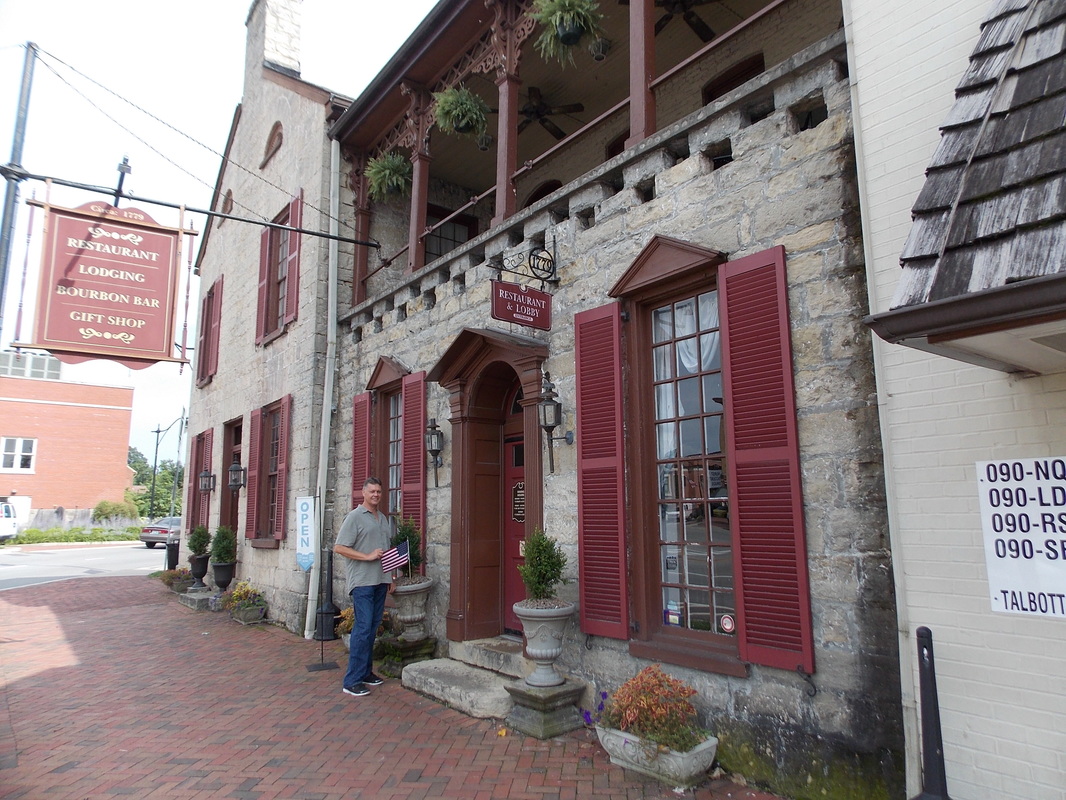 I never would have guessed you could find so much history in one little tavern out in the middle of Kentucky. Prior to visiting a new bar on our list we like to find out as much as we can about the bar’s past so that while we are there we can soak in the historical ambiance. The Old Talbott Tavern has it all! Abe Lincoln stayed there with his family as a child, the exiled French King Louis Phillipe had murals painted on the second floor during his stay, Daniel Boone testified there while the building was being used as a courthouse, and Jessie James even left his mark by leaving bullet holes in the wall! Of course, being built in the year 1779 with that kind of guest list to boast of, to my delight, the place has plenty of ghost stories as well.
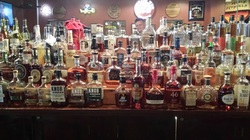 The bar itself was pleasant enough and the displayed bottles clearly reflected the Kentucky bourbon culture with Maker’s Mark bottles and signs prominently displayed. In fact, the bar is listed as a bourbon bar but we didn’t find any evidence that made it much different from most other old bars. Hitting the bar in the afternoon as we seem to have been doing in our past few trips seems to be the best time to get there, while business is slow because it gives us a chance to talk to the bartender. Heather didn’t have any good bartender ghost stories but she did make some great beer recommendations including the Kentucky Bourbon Barrel Ale. Loved that beer! 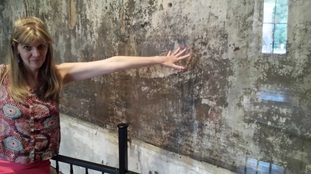 Bullet Holes in the wall left by Jessie James. Bullet Holes in the wall left by Jessie James. The second level porch just outside our room which overlooks the square was the perfect place to relax with a glass of wine and watch the horse drawn carriage make its rounds throughout the evening. While enjoying the evening, we made two new friends who were also relaxing on the shared porch, and discovered serendipitously that they are also from Tampa! They were there hoping for some ghostly encounters, as well. Okay, truthfully, Bruce wasn’t looking for ghosts, but the rest of us were. We learned that the bullet holes which can be viewed in the Jessie James room were put there after Jessie James had retired to the room to sleep off too many drinks in the tavern downstairs and decided to shoot at the birds in the paintings on the wall. Unfortunately, the ghost of Jessie James chose not to materialize to any of us that night, nor did any of the other ghosts. We had to settle for great stories, new friends, a beautiful night in a historic old Inn, and after a night like that, I don’t think it could have gotten any better. (Well, until we toured the Jack Daniels Distillery on the way home in TN the next day!) 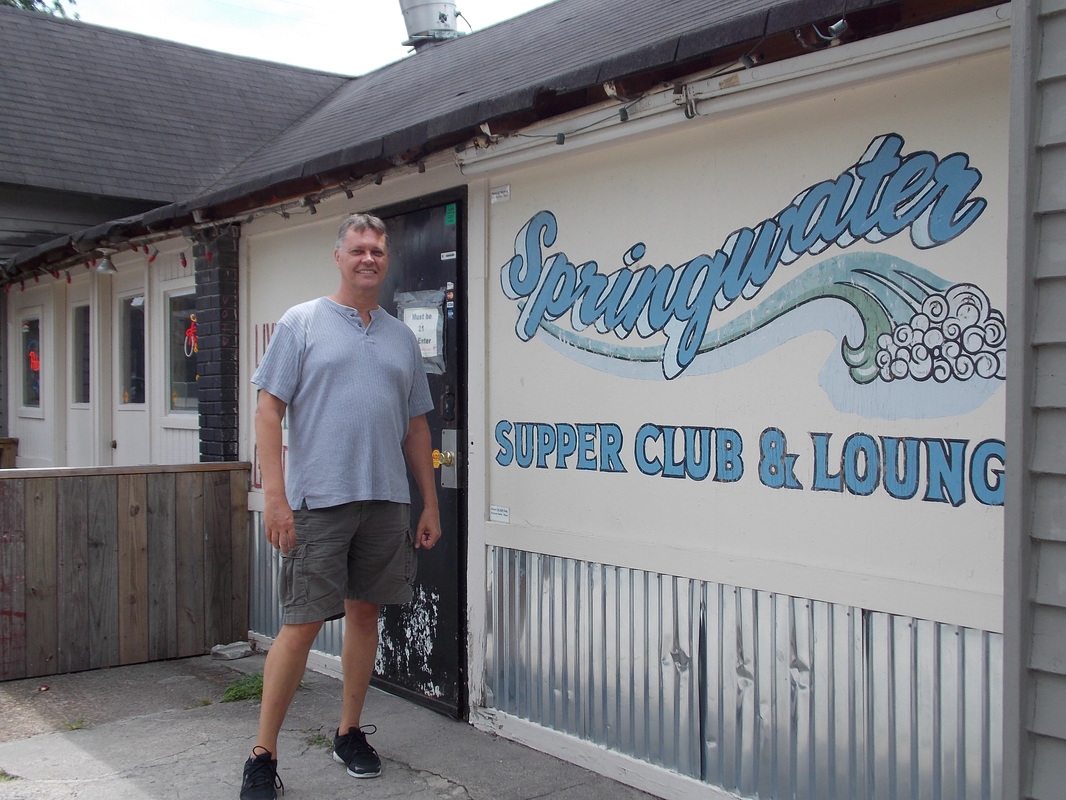
Considering Nashville’s music notoriety and history of nightclubs, you’d think the oldest bar would be a swank, historic destination. It is not swank. The reviews we read on Yelp, in fact, called it “the divyest dive bar you’ll find.” One review even said, “walked in, turned around and walked right back out. I still smell like smoke”. We went to Nashville prepared to clutch our wallets close and watch our backs for a knife fight. We arrived in the early afternoon, under the protection of broad daylight, and took pictures of the near windowless, signless, painted shed like exterior. Not deterred by the broken window in the front, determined to fulfill our mission of visiting the oldest bar in every state, we held our breath and walked in.

We were immediately greeted by Angel, a very friendly sweet bartender. There was no one else in the bar yet, so we took a seat at the bar and looked around. The atmosphere was definitely divey but with charm and character. They weren’t serving any food yet in the afternoon, but invited us to bring over barbecue from Hog Heaven next door which was so good we went back for more. By the time we were on our second beer, there were 7 or 8 patrons who had strolled in, about half through the back door, who not only all seemed to know each other but were friendly enough to strike up conversations with us. We learned this is the quintessential local bar where everybody knows each other and are warm and welcoming to strangers.
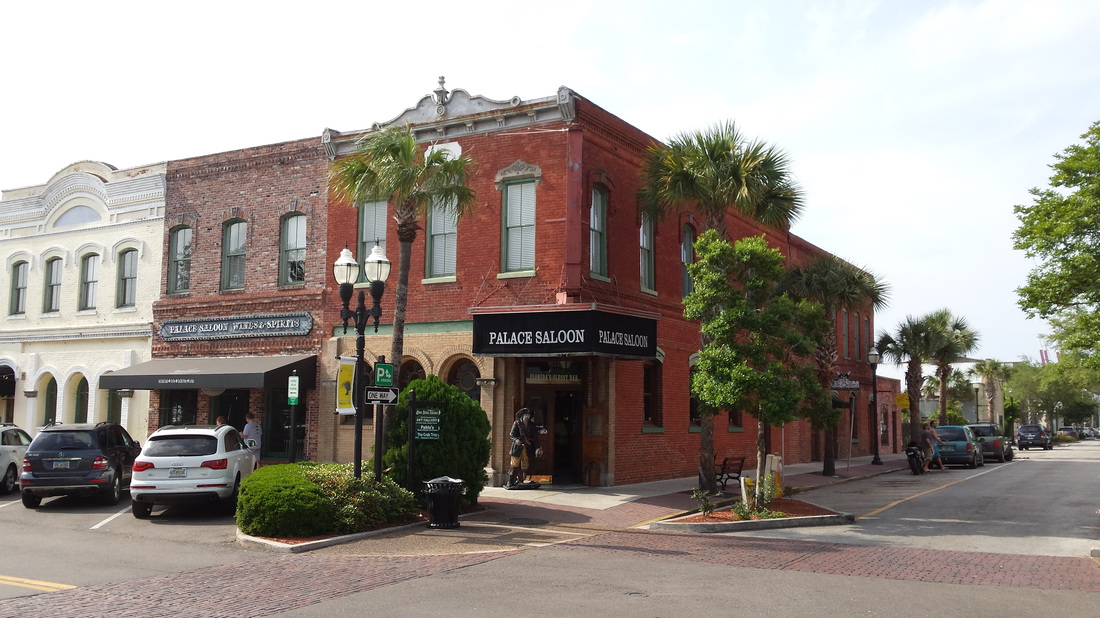
If you ask most people where they would think the oldest bar in Florida is, they might guess it to be St. Augustine. Founded in 1565, St. Augustine is the oldest continuously European occupied settlement in continental United States. I'll admit being a little disappointed to learn that the oldest bar in the state only dates back to 1903 and is way up in Fernandina Beach, just North of Jacksonville. When we started this quest of visiting the oldest bar in every state, I was looking for real colonial history dating back hundreds of years, and Florida should have it! Once again though, I was happily surprised and thoroughly impressed with the beauty and history of The Palace Saloon!
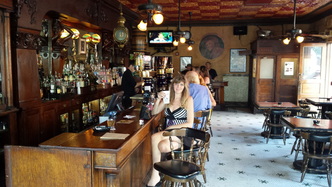
Stepping through the wooden swinging doors and crossing the tile mosaic floor into this restored turn of the century gem quickly alleviated my skepticism. The grand hand carved mahogany mirrored bar, underneath the molded red and gold tin ceiling and hand-painted murals on the walls gave the overall regal ambiance that must have impressed the regular patrons including the Rockefellers and Carnegies in her earlier years. The original owner, Louis G. Hirth, wanted a gentleman’s club different from the town's seedy bars, and as a major seaport at the time, his Palace became the watering hole of the very wealthy. It was even the first hard liquor establishment to serve Coca-Cola and was presented with a chin dispenser for the syrup by the company’s founder. Hirth was a shrewd businessman. Anticipating the demand for liquor right before prohibition, he rented storehouses and stocked up on hard liquor bottles. People lined up by the busload to purchase liquor up until the very last minute before the law went into effect.
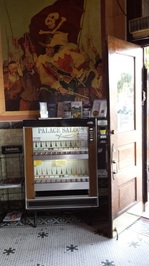 The cigarette machine at the front door. The cigarette machine at the front door.
Painstakenly remodeled in the fifties, the Palace retains its beauty, while offering a much more casual, almost “divey” atmosphere. In fact, I even had to take a picture of the now antique but operational cigarette machine they had. It must be twenty years since I’ve seen one of those! I ordered the house specialty, a well-poured Pirate’s Punch. While Bruce and I sipped our drinks and admired the antiques, a friendly couple sitting next us struck up a conversation. Pam (Big Red) and Clyde were fascinating to talk to as Palace insiders. Pam had her first drink at the Palace and even bartended there over the years. I really enjoyed her ghost story of Charlie, a Palace fixture having bartended there for 50 years, whom still in his afterlife watches over the bar. She recalled cleaning up after a long shift and being alone, coming back out to the bar to find two glasses of whiskey mysteriously waiting for her on the bar. Apparently Charlie was rewarding her with a well-earned end of the night toast!
In spite of such a dark history and Savannah's apparent focus on ghost story tourism, old streets of the historic district were picturesque lined with enormous moss draped oaks in front of the stately well maintained homes. We climbed down steep stairs down to cobblestone streets to find a large marketplace along the river dabbled with historic markers of statues and more parks. One particularly cool area was a tile x marked square which echoes if you stand at the very center. After a day of touring we were able to truly appreciate the beautiful squares by sitting in one near our hotel, sipping wine, while Bruce smoked his cigar, and like a small hometown, strangers greeted us and stopped to chat as they strolled through with their dogs. Unlike the elegance and dignified discovery of the Revolutionary War heros that we found on our previous trip to Charleston, it was the dark, crime ridden past of The Pirate House we sought in Savannah, GA. We learned the beginnings of the Pirate House were very honorable. It starts with the humanitarian, James Oglethorpe who founded Georgia and the City of Savannah in 1733. His colony outlawed slavery, limited land ownership, and offered an economy based on family run farming. The plans for the city included small parks or squares every few blocks which still exist and have even multiplied. An experimental garden was planted by botanists from Britain who had brought specimens to grow from all over the world. The Garden was modeled after the Chelsea Botanical Garden in London and was named The Trustees Garden after Oglethorpe's men. Though the garden is long gone, the herb house that was built in 1733 still stands and is one of the original buildings that comprise what is now The Pirate House. 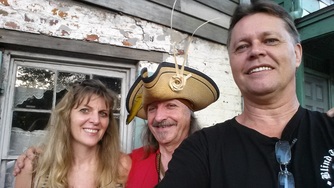 The herb house its expanded structure eventually became a Tavern and due to its close proximity to the river, it became the watering hole of pirates. The lawless ship's captains often needed to add to their crew and resorted to criminal measures to lure unsuspecting men into the life of piracy. Seven tunnels had been dug in the high banks of the river to make transporting cargo ashore easier, and two went directly to The Pirate House leading into the Rum Cellar, making it the perfect set up for pirates to shanghai local patrons. Along with other tunnels in the city, they were also used to transport and store yellow fever victims, which give way to many spooky ghost stories about the tunnels. We especially enjoyed our pirate clad tour guide, Christopher Blackswitch telling us about the young yellow fever victim crying tears of blood for his mom often seen in the window of the building. Unfortunately for my husband Bruce, it is only women who are able to catch a glimpse of this spector. 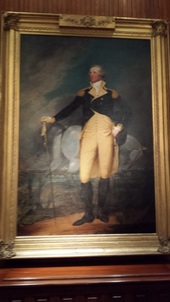 Second portrait of George Washington painted by John Trumbull Second portrait of George Washington painted by John Trumbull
It is with George Washington's first tour of the southern states on horseback that we focused our visit. We explored the trail of Washington by touring the Heyward-Washington house which he rented for his eight day stay in Charleston. We also explored the Old Exchange building where Washington attended a grand ball in his honor. Washington remarked in his diary that the women were "elegantly dressed and handsome ladies".
My favorite story started in the Exchange. After Washington's visit, the City Councilmen commissioned John Trumbull to paint a portrait of Washington to commemorate the visit. Trumbull painted a seven-foot royal portrait of Washington but, much to the Councillors dismay, had Washington posed in front of the city of Trenton, NJ. Councillors refused to pay Trumbull for the portrait, so Washington stood for a second portrait, this time featuring Charleston in the background. Trumbull got his revenge on the Councillors, however, by inserting a laughing horse behind the President, with the horse's butt prominent and its tail strategically raised over the city and its council in direct line of fire! We had to go to city hall to see the original of this caustic portrait. 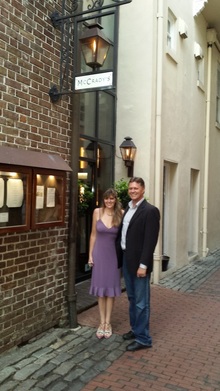
The fragrant white flower vines, and Spanish moss covered tree lined neighborhoods of perfectly preserved colonial homes provided the perfect ambiance making us feel like we had strolled back through time where we found McCrady's tucked back on the brick lined Unity Alley. As we stepped through the door under a quaint wrought iron gas lamp sign, McCrady's did not disappoint. It is actually the outside of two buildings closed in with 3 large brick arches that were once open bays along the left, housing a romantic booth in each. On the right was a long elegant wooden bar with a wine cache above to be reached by a library style rolling ladder. You could look up and see the once outside windows above in this cavernous room. Sam, our bartender served me the uniquely tasty Marcona time out, and Bruce sipped an equally interesting Incan affair. These delicious drinks put us perfectly in the right frame of mind to absorb some history!
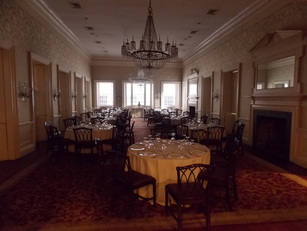 The famous long room on the second floor where George Washington dined. The famous long room on the second floor where George Washington dined.
This building had originally been purchased by Edward McCrady in 1778, as a Tavern. Two years later, when Charleston surrendered to the British, McCrady had been taken prisoner and sent to St. Augustine, FL where he was held for a year before his release. Coincidentally, our visit marked the 235th anniversary the siege of Charleston, where Major General Benjamin Lincoln of the Continental army surrendered to the very day. This didn't stop McCrady from eventually returning to his tavern and building on to it including an elegant long room on the second level where music, dancing, and shows were performed. McCrady's was not the local dive pub of the old city, but the destination for the city's upper crust members. George Washington himself was hosted at the Cincinnati Society dinner complete with music and dancing in the long room, where it is said they enjoyed a 30 course meal.
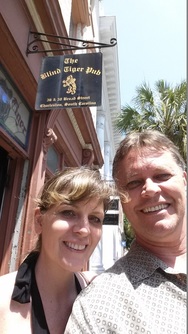
Another interesting old bar we found while in Charleston was The Blind Tiger Pub. This Charleston landmark was built in 1803 as a bank building and is right in the heart of the historic district. The bar had a 19th century colonial ambiance with a fun heritage. The name came from the dispensary act put into effect in 1893 by governor Benjamin Tillman. The act was an attempt to restore the dignity of the city by state control of all alcohol sales. Charlestonians responded by paying for entrance to see a blind tiger where the alcohol was included in the fee. The fictional blind tiger never appeared but patrons would leave "blind drunk".
|
AuthorMost of these posts are written by Cheryl and edited and added to by Bruce. Learn more about us on our About us page. Archives
October 2016
Categories
All
|